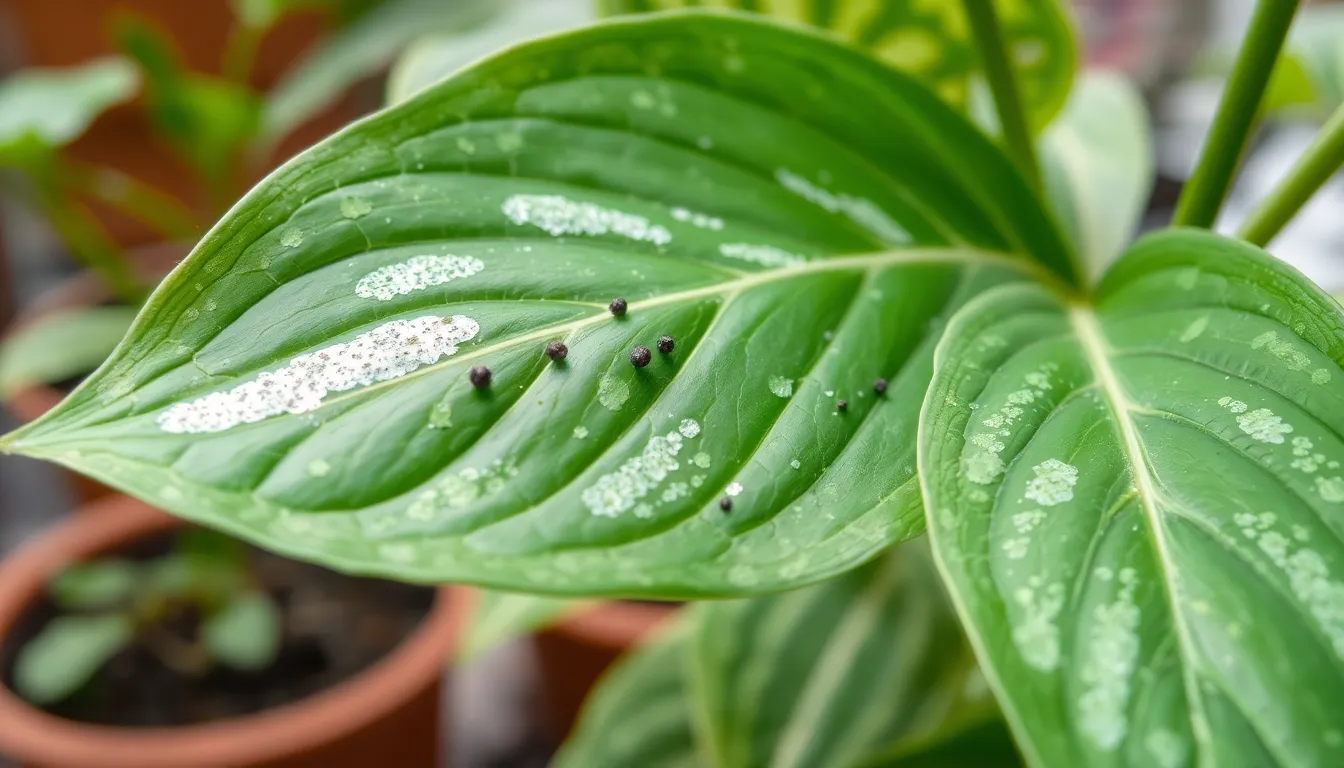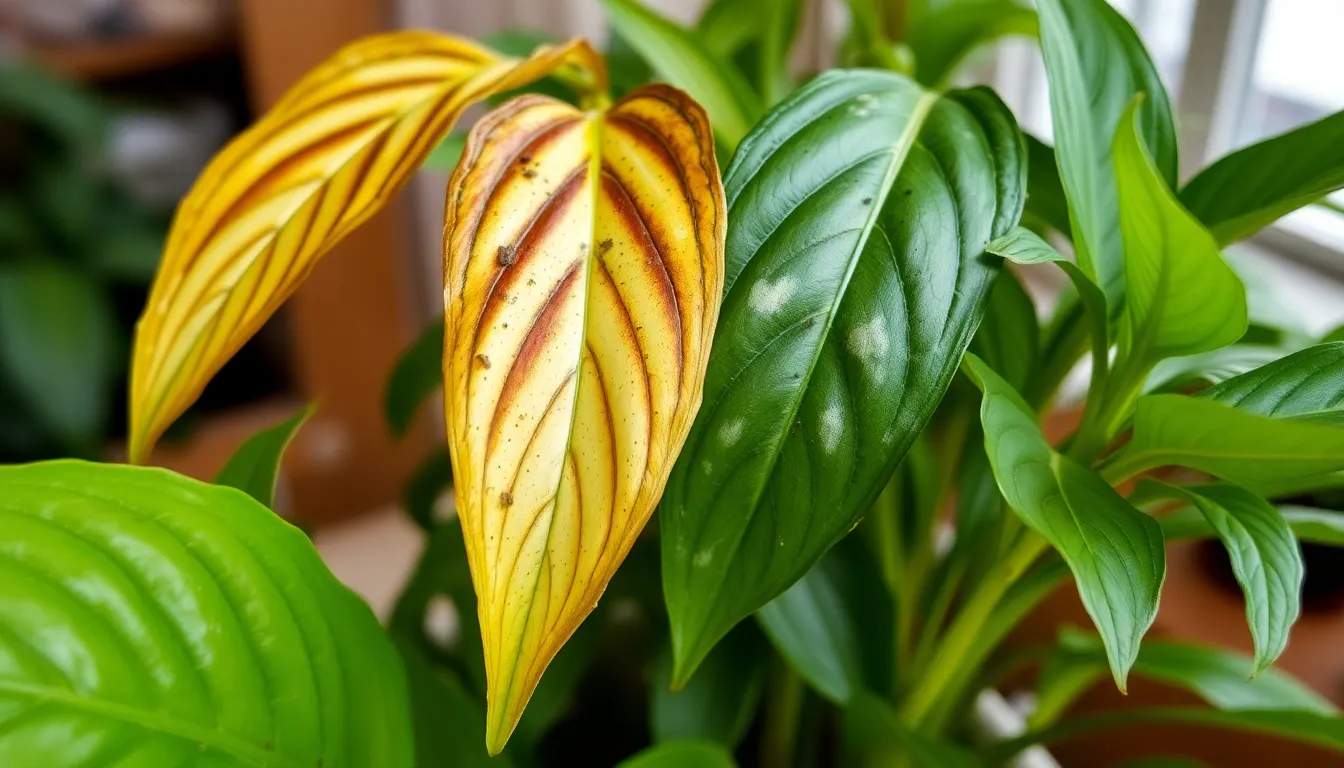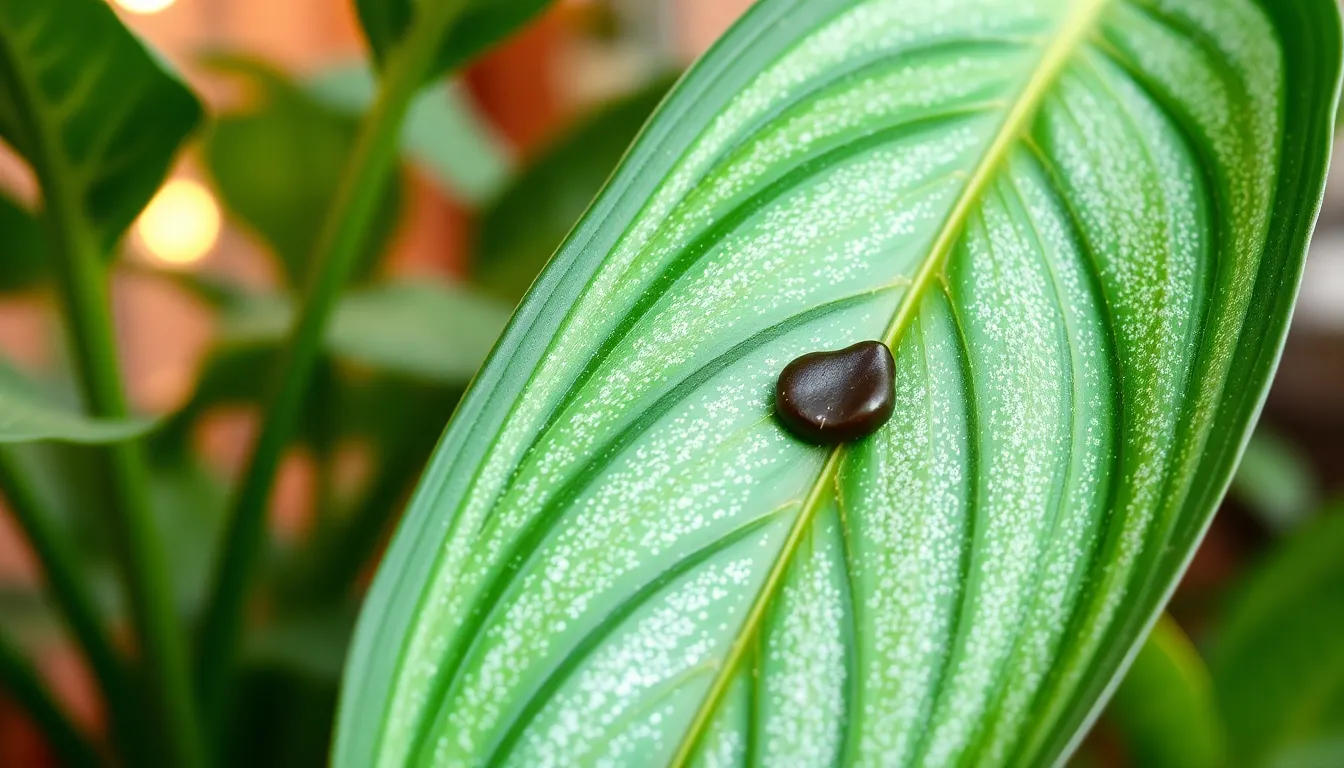If you think your houseplants are safe from pests, think again! Enter thrips—the tiny, sneaky insects that can turn your leafy friends into a buffet. These little critters may be small, but they pack a punch when it comes to damaging your beloved plants. They’re like the uninvited guests at a party who just won’t leave, munching on leaves and leaving behind a trail of destruction.
Thrips Houseplants
Thrips pose a significant threat to houseplants. These tiny insects can wreak havoc on foliage, leading to unhealthy plants.
What Are Thrips?
Thrips are slender, winged insects measuring 1 to 2 millimeters in length. Usually found in gardens and greenhouses, these pests feed on plant tissue. They possess a long, narrow body and can range in color from yellow to black. Many species thrive in warm climates, making them common in indoor plants. Known for their rapid reproduction, thrips can quickly infest a single plant and spread throughout the home.
Life Cycle of Thrips
The life cycle of thrips consists of four stages: egg, larva, pupa, and adult. Female thrips lay about 20 to 300 eggs on or in plant tissues. After hatching in 2 to 14 days, larvae emerge and begin feeding. This stage lasts approximately 4 to 15 days, during which they grow and molt. Following this, they enter a pupal phase lasting around 2 to 7 days. Adults often live for several weeks, with conditions affecting their lifespan. Understanding these stages aids in effective pest management for houseplants.
Identifying Thrips on Houseplants

Identifying thrips on houseplants requires careful observation.
Signs of Thrips Infestation
One noticeable sign of thrips infestation includes discolored leaves. Leaves may exhibit silvery or stippled marks as thrips feed on plant tissues. Another indicator involves black specks, which are thrips droppings. Inspecting the undersides of leaves often reveals adult thrips or their larvae. Additionally, flowers can become distorted, signaling a larger issue. Regularly checking for these signs aids in early detection and management.
Common Houseplants Affected by Thrips
Many houseplants fall victim to thrips. Spider plants, known for their hardiness, often show symptoms like browning leaf tips. African violets can develop curling leaves due to thrips feeding. Other succulents such as jade plants may also exhibit discoloration. Additionally, ficus plants frequently experience slow growth and weakened stems. Understanding the plants commonly affected ensures timely intervention and prevents widespread infestations.
Preventing Thrips Infestations
Preventing thrips infestations requires a proactive approach to plant care and environmental control.
Best Practices for Plant Care
Regular watering helps maintain plant health, but overwatering increases vulnerability to pests. Cleanliness around plants promotes good air circulation, which discourages thrips establishment. Fertilizing according to recommendations strengthens plant vigor, making them less attractive to pests. Rotating the position of plants every few weeks can disrupt thrips’ breeding patterns. Consider using sticky traps to monitor for early signs of thrips.
Environmental Control Measures

Maintaining optimal humidity levels below 50% can deter thrips, as they prefer drier conditions. Utilizing a fan for air circulation discourages thrips from settling. Adjusting indoor temperature to remain cool during the day limits their reproduction rate. Implementing regular cleaning of plant leaves with water removes potential eggs or larvae. Inspecting new plants for thrips before bringing them indoors minimizes the risk of bringing infestations into the home.
Treatment Options for Thrips
Effective treatment options exist for controlling thrips infestations in houseplants. Choosing the right method depends on the extent of the infestation and personal preferences for treatment.
Natural Remedies
Employing natural remedies offers an eco-friendly option for thrips management. Neem oil, derived from the seeds of the neem tree, acts as an effective insecticide that disrupts thrips’ life cycles. Insecticidal soap also provides a safe way to target these pests without harming the plants. Another approach involves introducing natural predators, such as predatory mites or nematodes, that feast on thrips and help reduce their population. Regularly spraying plants with a mixture of water and mild dish soap can also deter thrips while protecting plant health.
Chemical Solutions
Chemical solutions deliver rapid control for severe thrips infestations. Insecticides containing pyrethroids or spinosad effectively eliminate adult thrips and larvae. Applying these chemicals according to product instructions ensures maximum effectiveness while minimizing harm to the plant. Systemic insecticides are another viable option, as they are absorbed by the plant, providing lasting protection against thrips. Targeting the undersides of leaves during application is crucial, since thrips often hide there. Regular reevaluation of treatment success will help determine if further intervention is necessary.
Conclusion
Thrips can pose a serious threat to houseplants but understanding their behavior and life cycle is key to effective management. By staying vigilant and regularly inspecting plants for signs of infestation, owners can catch problems early. Implementing preventive measures like maintaining proper humidity and cleanliness can significantly reduce the risk of thrips taking hold.
When infestations do occur, a range of treatment options is available, from natural remedies to chemical solutions. With the right approach, plant owners can protect their beloved greenery from these unwanted pests and ensure their houseplants thrive.

